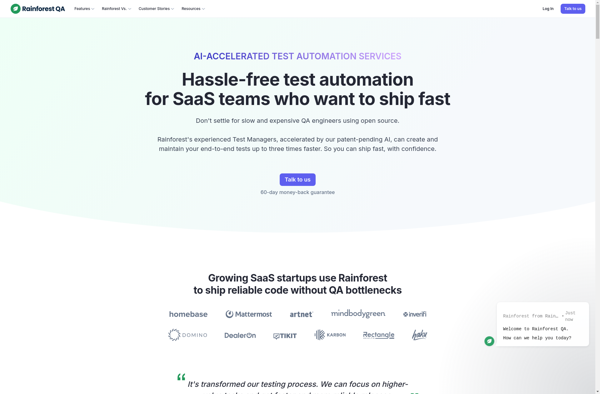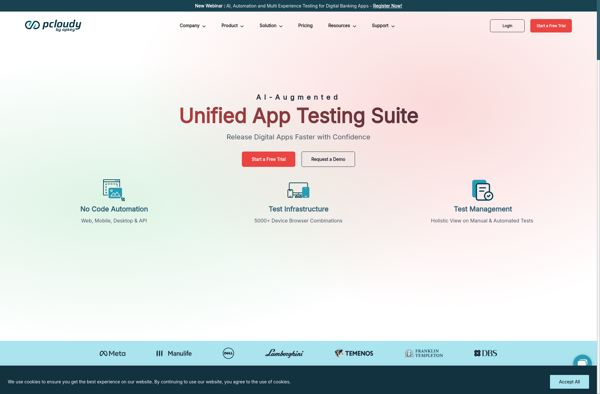Description: Rainforest QA is an automated testing platform that allows users to write, run, and manage browser tests across mobile and desktop environments. It aims to simplify and streamline testing for web and mobile applications.
Type: Open Source Test Automation Framework
Founded: 2011
Primary Use: Mobile app testing automation
Supported Platforms: iOS, Android, Windows
Description: pCloudy is a cloud-based test automation platform that allows users to test mobile and web apps on thousands of real devices hosted in the cloud. It supports manual and automated testing and provides integration with CI/CD pipelines.
Type: Cloud-based Test Automation Platform
Founded: 2015
Primary Use: Web, mobile, and API testing
Supported Platforms: Web, iOS, Android, API

